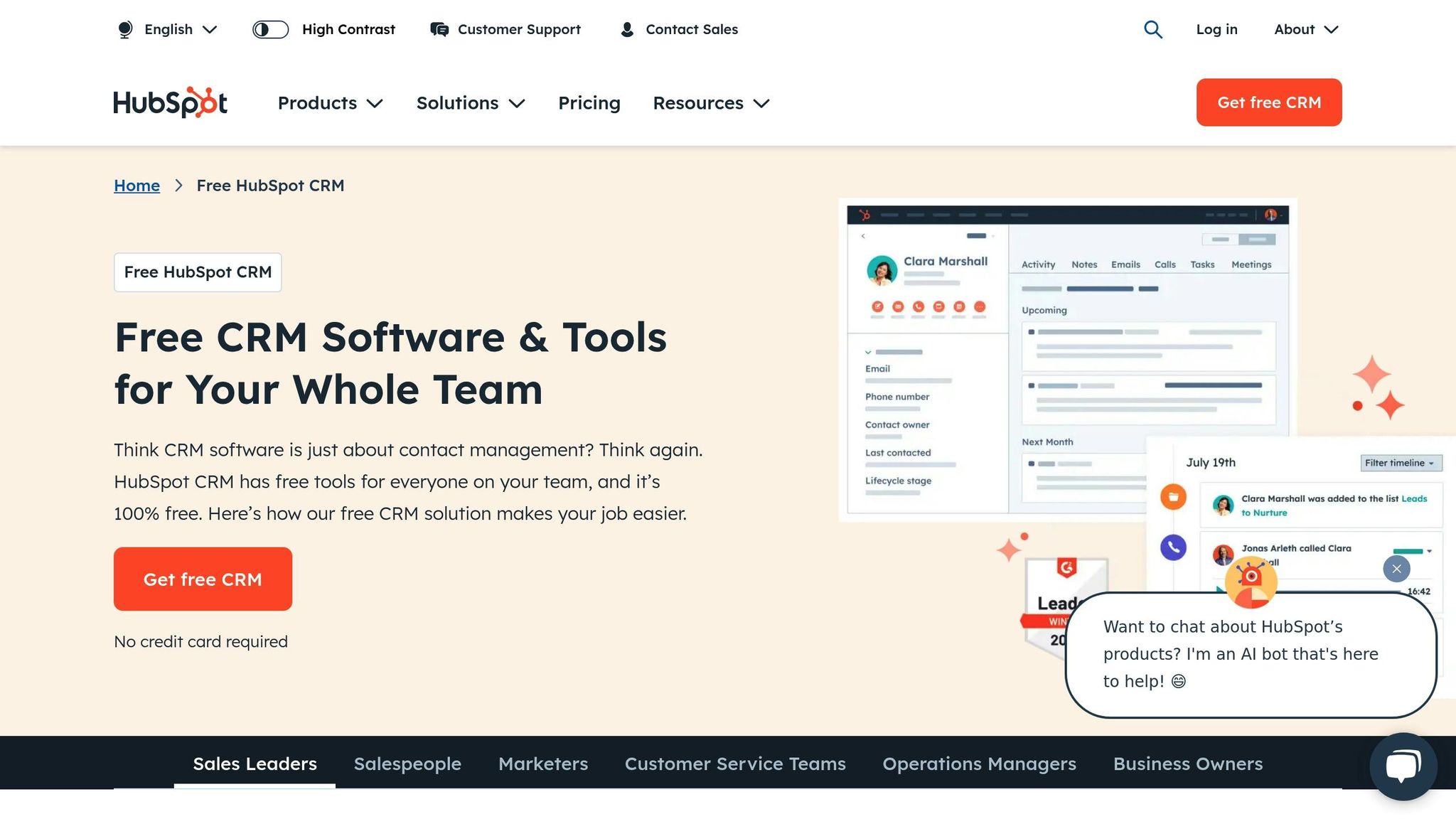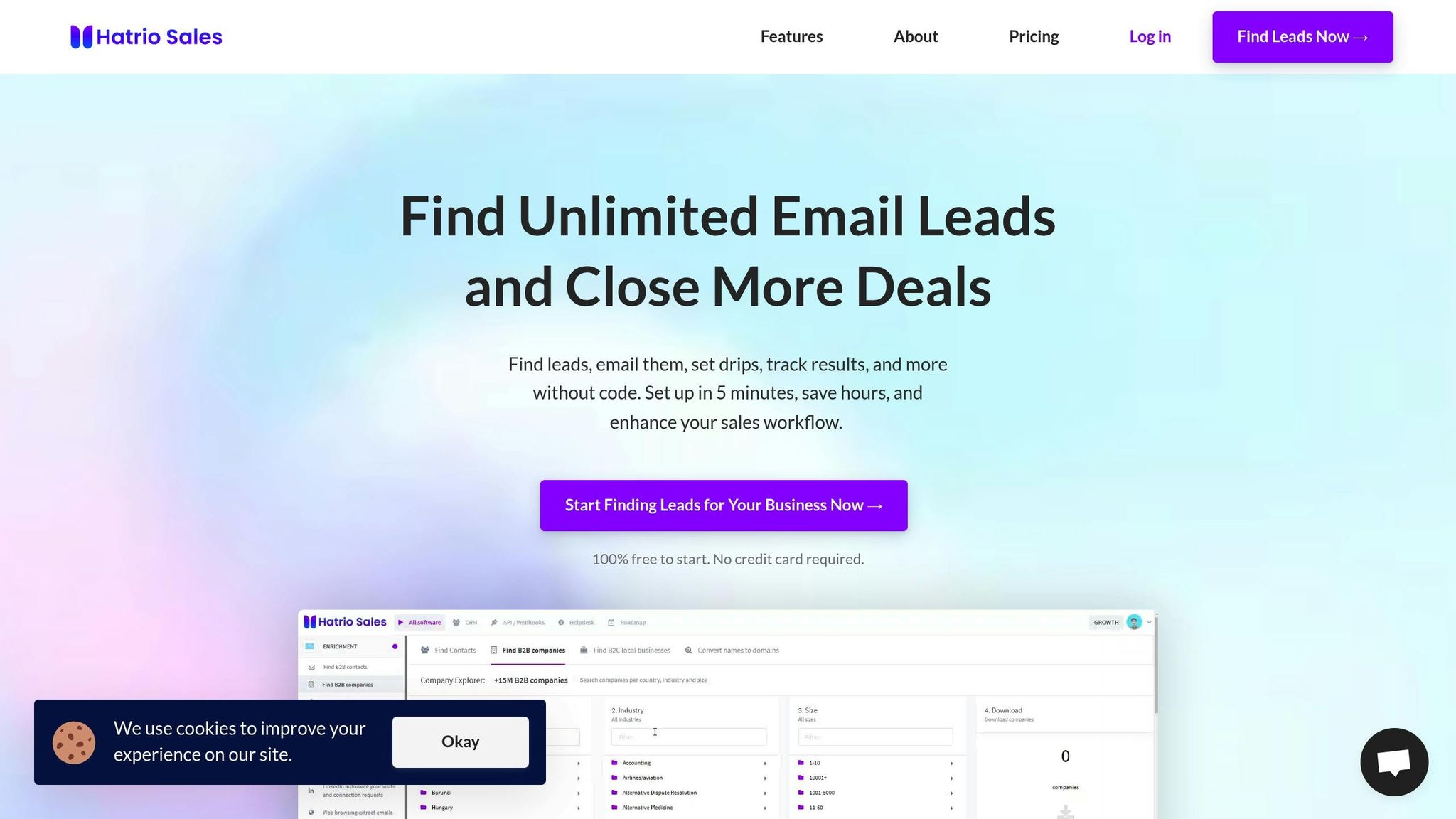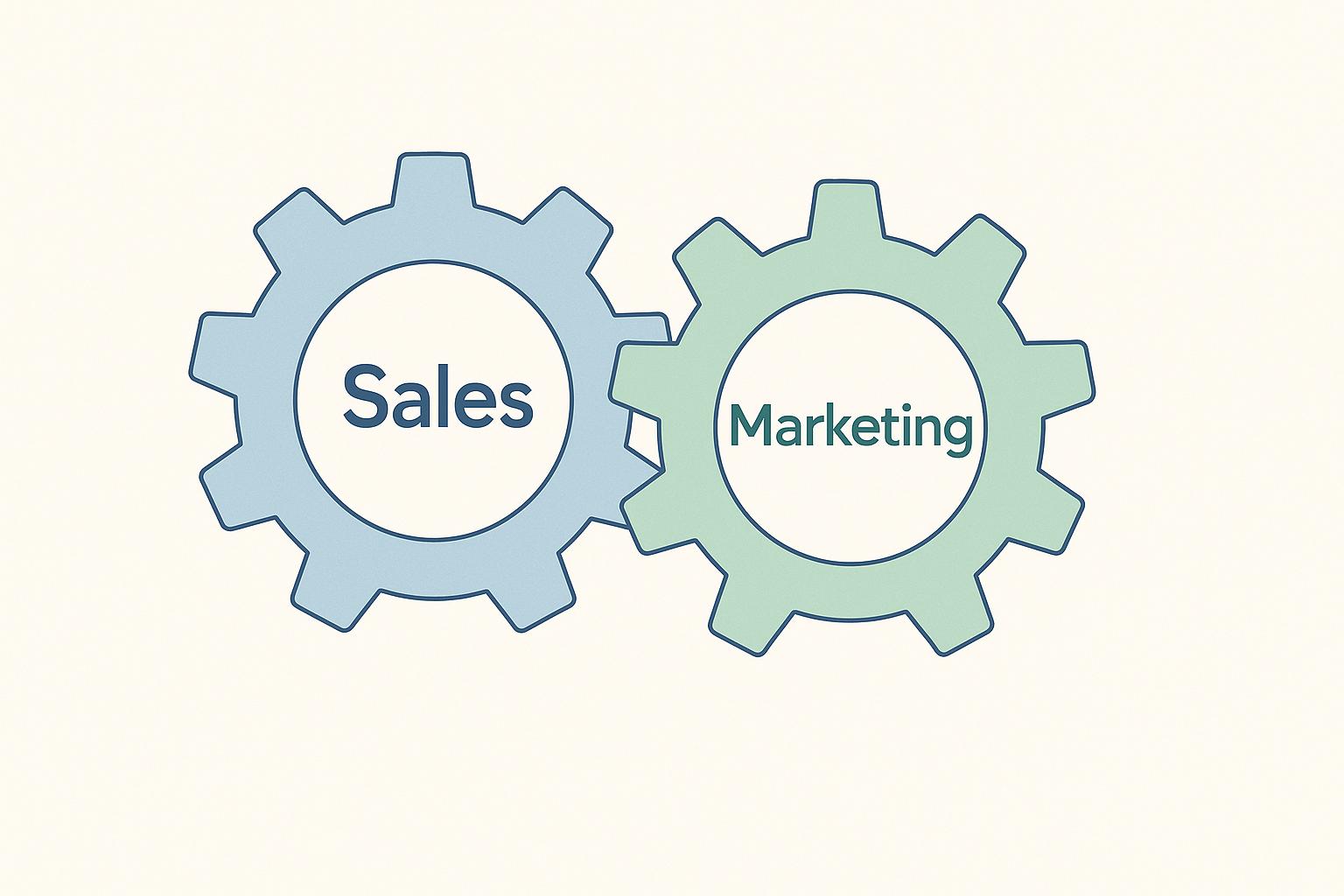Demographic scoring helps sales teams focus on the best leads by ranking prospects based on attributes like company size, industry, and job title. Here's what you need to know:
- What It Is: A system to prioritize leads based on who they are (e.g., industry, revenue, decision-making power).
- Why It Matters: Saves time, improves resource allocation, and boosts sales efficiency by targeting high-potential customers.
- Key Steps:
- Define your Ideal Customer Profile (ICP) (e.g., company size, location, job titles).
- Assign point values to demographic factors (e.g., revenue = 40 points, job title = 30 points).
- Use tools like Hatrio Sales to automate data collection and scoring.
Quick Tip: Combine demographic scoring with behavior-based scoring (e.g., website visits, email clicks) for a complete view of lead quality. Together, these methods ensure you focus on leads that are both a good fit and actively engaged.
Want better results? Start by building your ICP and refining your scoring model regularly.
Core Elements of Demographic Scoring
Creating Your Ideal Customer Profile
Start by defining your ideal customer profile (ICP) - the blueprint of your best customers. This involves analyzing your current customer base to identify traits that consistently correlate with high value.
| Key ICP Component | Description | Impact on Scoring |
|---|---|---|
| Company Size | Annual revenue, employee count | High weight – indicates budget potential |
| Industry | Primary business sector | Medium weight – shows market fit |
| Geographic Location | Headquarters, service areas | Medium weight – affects service delivery |
| Decision Maker Level | Job titles, departments | High weight – influences buying power |
Scoring Factors and Weights
Once your ICP is set, decide which demographic factors carry the most weight in your scoring model. Assign points based on how much each attribute affects customer value.
Here are the main categories to focus on:
- Company Demographics: Metrics like revenue, size, and industry.
- Contact Demographics: Details such as job level, department, and decision-making authority.
- Market Position: Includes growth stage, market share, and technological maturity.
By assigning clear point values to these attributes, you create a scoring system that accurately reflects customer potential.
Team Alignment and Input
Getting input from your team ensures the scoring model is practical and mirrors real customer interactions.
"I'm using Hatrio Sales to find email addresses for outbound sales & Email Campaign. Our sales funnels are fully managed by them - from prospecting to qualifying to closing sales." - Hatrio Sales Customer
Here’s how to involve your team effectively:
- Hold cross-functional workshops: Schedule regular meetings with sales, marketing, and customer service teams to review and refine the scoring criteria.
- Incorporate team feedback: Create a clear process for gathering and applying team input on the scoring model.
- Track and adjust: Regularly monitor how well the scoring model predicts success and make updates based on performance data.
Building Your Scoring Model
Data Collection Methods
Efficient data collection is the foundation of building a strong demographic scoring model. By organizing customer information effectively, you can make more informed decisions.
Key Data Sources:
| Data Source | Data Collected | Collection Method |
|---|---|---|
| Form Submissions | Basic demographics, company details | Website forms, landing pages |
| CRM Systems | Historical data, interaction records | Automated tracking |
| Lead Enrichment | Company size, revenue, and industry | Data enrichment tools |
| Professional Networks | Job titles, career history | LinkedIn prospecting |
Tools like Hatrio Sales simplify this process, providing quick access to accurate customer data. Once your data is collected and organized, you can move on to assigning point values.
Setting Point Values
Assigning points to different demographic attributes helps prioritize leads effectively. Here’s an example framework:
Point Value Framework:
| Demographic Factor | Point Range | Importance Level |
|---|---|---|
| Company Revenue | 0–40 points | Critical |
| Industry Match | 0–30 points | High |
| Geographic Location | 0–20 points | Medium |
| Decision Maker Level | 0–30 points | High |
After setting these values, it’s essential to continually test and refine them to ensure accuracy and effectiveness.
Model Testing and Updates
Testing your scoring model against past successes is a practical way to validate its accuracy. Monitor conversion rates across different score ranges and adjust point values as needed.
"Hatrio Sales is really helpful to collect emails from professional networks like LinkedIn. It is fast and the lead data is accurate."
- Happy Customer, Hatrio Sales User
To keep your scoring model effective, remember to review and update it regularly. This ensures it stays aligned with your business goals and adapts to changes in your market.
HubSpot Lead Scoring With Explicit (Demographic) and ...

sbb-itb-b22f30c
Advanced Scoring Techniques
Once you’ve set up a basic scoring framework, you can refine your lead qualification process with more advanced methods.
Combining Demographic and Behavioral Data
Blending demographic and behavioral data gives you a clearer picture of your leads. Demographics tell you who they are, while behavior shows what they’re doing. Together, these insights help you identify the most promising prospects.
Key Elements of Hybrid Scoring:
| Data Type | What to Focus On |
|---|---|
| Demographic | Details like company size, industry, location |
| Behavioral | Actions such as website visits, downloads, emails opened |
| Combined Triggers | When demographic traits align with key behaviors, scores increase |
Platforms like Hatrio Sales make it easy to track and score leads based on these factors. By analyzing both fit and engagement, the platform helps you zero in on the leads most likely to convert. You can even tailor these insights for different market segments by creating specialized scoring models.
Using Multiple Scoring Models
Different market segments often require different approaches. By creating multiple scoring models, you can ensure your system stays relevant and effective across various audiences.
Keeping Models Updated
Advanced automation tools now allow for ongoing updates to your scoring models. Regular reviews help align your criteria with both current trends and your business goals.
"Automate lead scoring based on their activity, gather interest data and work only with qualified leads." - Hatrio Sales Platform
Tools like Hatrio Sales simplify this process by offering real-time insights into lead behavior. This dynamic approach ensures your scoring models evolve alongside market conditions, keeping your strategy sharp and effective.
Next Steps
Main Points Review
To effectively score demographics, you need reliable data and automation. Start by defining criteria that align with your ideal customer profile. Then, focus on the most relevant attributes to pinpoint high-potential leads.
Hatrio Sales Features

Put these principles into action with the right tools. Hatrio Sales, featuring a database of over 1.5 billion records, offers powerful capabilities for lead targeting and enrichment. Here's how it helps sales teams:
| Feature | Benefit |
|---|---|
| Lead Enrichment | Automatically updates contact details with verified demographic data |
| Automated Scoring | Updates lead scores instantly as criteria are met |
| Database Access | Allows detailed searches and filtering based on demographic parameters |
| Campaign Integration | Triggers targeted campaigns using demographic scores |
Use these insights to streamline your approach and improve outcomes.
Implementation Guide
Follow these steps to start using your demographic scoring model:
- Set Up Data Collection Use lead enrichment tools to collect demographic details. Hatrio Sales can automatically fill in fields like company size, industry, and location with its extensive database.
- Define Scoring Criteria Assign specific point values to demographic traits that indicate higher purchase likelihood.
-
Configure Automation
Automate workflows to:
- Enrich incoming leads with demographic data
- Calculate and update scores in real time
- Route high-scoring leads to the right sales teams
These steps will help integrate your scoring model seamlessly into your sales process.
FAQs
How can I keep my demographic scoring model effective over time?
To ensure your demographic scoring model stays effective, regularly review and update the criteria based on current market trends and audience behaviors. Incorporate real-time data, such as customer activity and engagement levels, to refine scoring accuracy.
Automating the scoring process can also help you focus on high-priority leads while saving time. By leveraging tools that streamline lead scoring and enrichment, you can maintain a dynamic and efficient model that adapts to your business needs.
What are the advantages of combining demographic scoring with behavioral data?
Integrating demographic scoring with behavioral data provides a more complete understanding of your leads. By analyzing both who they are (demographics) and how they engage with your business (behavior), you can:
- Automate lead scoring to save time and focus on high-potential opportunities.
- Identify qualified leads by combining interest levels with key demographic traits.
- Prioritize effectively, ensuring your sales team targets leads most likely to convert.
This approach helps streamline your sales process and improves the accuracy of your lead qualification efforts.
How can I assign the right point values to demographic attributes in my scoring model?
Assigning the right point values to demographic attributes in your scoring model requires understanding which traits are most relevant to your ideal customer profile. Start by identifying key attributes like location, job title, industry, or company size that align with your target audience. Next, prioritize these attributes based on their importance to your business goals.
Using automated tools can simplify this process by analyzing lead activity and assigning scores based on predefined criteria. This ensures you focus on qualified leads that are most likely to convert. Fine-tuning your scoring model over time based on performance data will help improve its accuracy and effectiveness.



